|
OCEAN
CLEANUP PROJECT - NORTH SEA
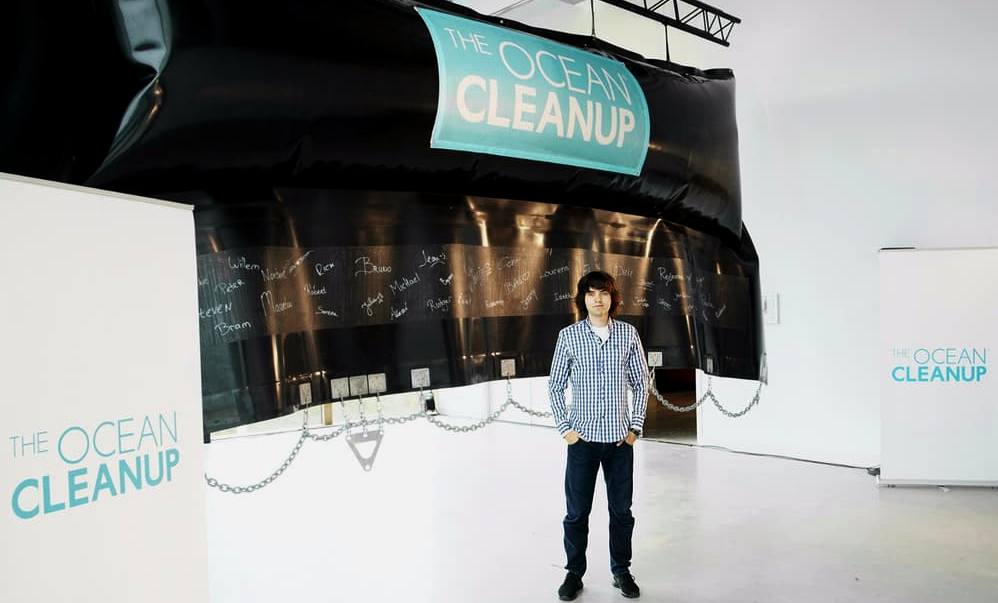
ROTTERDAM -
Boyan Slat stands under one of his giant rubber booms, proving
once again that an idea can be bigger than the man who dreamt
it.
GIZMAG
ENVIRONMENT - JUNE 27 2016
Its been a few years since Boyan Slat first revealed his bold
concept to clean up the world's oceans, and now we're set to see how his trash-catching barriers fare in the real world. The Dutch entrepreneur's Ocean Cleanup Project has successfully deployed its debut prototype off the coast of the Netherlands, which will serve as a first test-case ahead of a much larger installation planned to tackle the Great Pacific Garbage Patch in 2020.
Slat's garbage-collecting barriers have been described as artificial coastlines. They are basically long floating arms that rely on the ocean's natural currents to gather up plastic waste. Since he first introduced the concept, the Ocean Cleanup Project has raised US$2.1 million in crowdfunding and completed a feasibility study on its main target, the Great Pacific Garbage Patch, which some experts believe to be twice the size of Texas.
But before tackling this monumental vortex of ocean trash, the team needs to investigate how the barriers stand up under extreme conditions. Measuring 100 m (330 ft) long, the North Sea prototype is fitted with sensors that monitor its motion in the ocean, along with the physical loads that it is subjected to as waves rise and fall around it.
According to the Ocean Cleanup Project, a minor storm in this part of the world results in more violent sea conditions than an exceptionally heavy storm in the Pacific Ocean, which it says only occurs once every hundreds of years.
While it may inadvertently collect some trash in the North Sea, that's not really the immediate objective. The data that the team gathers through its monitoring of the prototype will help the engineers prepare to build a full-scale system that can withstand the conditions of the Great Pacific
Garbage
Patch. And Slat says that the prototype surviving the test is no guarantee.
"This is a historic day on the path toward clean oceans," he says. "A successful outcome of this test should put us on track to deploy the first operational pilot system in late 2017. I estimate there is a 30 percent chance the system will break, but either way it will be a good test."
The operational system Slat refers to is a larger project spanning 2 km (1.2 mi) off the coast of Tsushima Island between
Japan and
South
Korea. Here plastic waste is of particular concern to local governments with around 1 cubic meter (35 cu ft) of pollution for each of the more than 40,000 residents washing up on the island each year.
Other installations are planned in the years following, before a 100 km (62 mi) floating system is rolled out at the Great Pacific Garbage Patch between
Hawaii and
California. Slat says that the system could make it possible to cut the time required to clean up the world's oceans from millennia to mere years.
By Nick Lavers
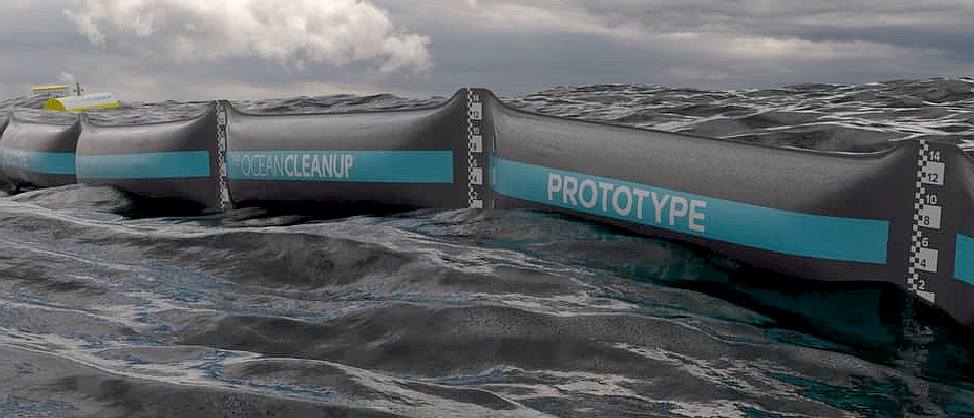
BOOM,
BOOM
- Artists impression of what the boom will look like
deployed. At the foot of this page you can see a picture of a
1 ton fishing net recovered by the research vessel Ocean Starr
when it returned to San Francisco August 23 2015, carrying tons of plastic waste pulled from the waters between California and Hawaii.
The crew had trawled part of what is called the Great Pacific Garbage Patch for about a month with volunteers on about 30 other boats as part of the Ocean Cleanup, an organization raising money and developing technology to deploy a cleaning system.
The Ocean Cleanup estimates it could extract 42 percent of the debris from the patch in 10 years, and its technology would be 33 times cheaper than more conventional clean-up methods, such as vessels with nets, which would be essentially fishing for plastic. The group puts its cost at 317 million euros ($363.19 million).

GREEN
OPTIMIST 28 JUNE 2016
First real size prototype of The Ocean Cleanup by Boyan Slat, was deployed in the North Sea last week.
I have to admit, the first time I heard about The Ocean Cleanup, I thought of it as something great but super adventurous and slightly unrealistic. Fortunately, I was wrong- not about it being great, but about the rest.
Only a few years after the idea went viral, the revolutionary device, invented by Boyan Slat when he was still a teenager, is now collecting plastics in the
North
Sea. Last month, the project won the very prestigious Katerva Award. After this, the Dutch government granted funding so that the project can enter its one-year long testing phase.
The device was installed 12.5 miles out in the North Sea last week, Thursday. It is made of vulcanized rubber and it is powered solely by the ocean currents. Its total length is 328 feet.
The device breaks many records and it is “the first” in numerous categories, but the most noble of all, I think, is the one listing it as the first ever ocean cleanup system to be tested at sea.
The Dutch Minister of Environment, Sharon Dijksma, expressed her wish that in the end of this testing process, the device will turn out to be a successful large scale technology that removes floating
plastics from the ocean. She also described the Ocean Cleanup prototype as an inspiring example of a great measure for dealing with the problem of ocean plastic pollution.
At the moment, the purpose of the testing is to measure resistance to ocean storms and strong currents. Of course, if it collects some plastics along the way, it would be an added bonus. The idea is that after testing, Boyan Slat and team can deploy the device in the
Pacific
Ocean, the area where most plastics have accumulated. There, the degradation of plastics is severe, affecting the environment, the marine life, and threatening entire eco systems of disappearing. Some predictions state that if no action is taken, in 2050 there will be more plastic than fish in the ocean.
According to the preliminary calculations, there is about 30% chance that the system will get damaged during the tests. Nevertheless, the team behind the technology is highly optimistic. Slat himself comments that regardless of whether the prototype breaks or not, the results will be highly useful.
The team is looking to have the first fully operational pilot system deployed in the Pacific Ocean as soon as in 2017.
It is an incredible technology, I have to admit, and it serves an equally as incredible cause. I only hope that its success will not result in careless garbage disposal just because we’re able to clean it up. By Mila
Luleva
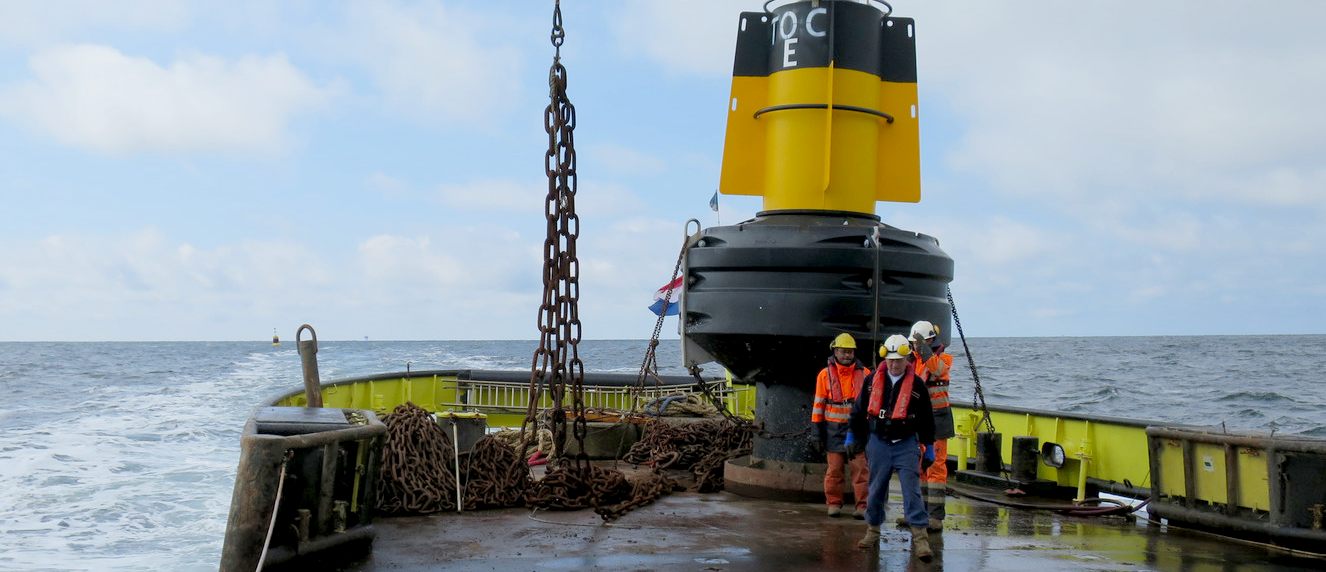
STARTUP
JUNCTURE - JUNE 22 2016
A great day for The Netherlands, and lets be honest: for the whole world actually. 21-year old inventor Boyan Slat today unveiled his prototype of The Ocean Cleanup, the ambitious project to filter plastic out of the oceans.
The Ocean Cleanup earlier this month raised funding for this test with the prototype (1.5 million euro).
The prototype, a 100 meter long tube, will be placed tomorrow in the North Sea, 23 kilometers (12 nautical miles) off the Dutch coast. It will remain there for a year. It won’t filter plastic immediately. Mainly this pilot is a test for the survivability of the system in severe weather conditions. Sensors will track every motion of the prototype and the loads it is subjected to.
“If it doesn’t break there, it doesn’t break anywhere”, said Slat to NOS. In the initial release he said there was a 30 percent chance of breaking. However, these of course are only the first steps of an ambitious project. Let’s all hope the floating barriers can withstand nature!

OCEAN CLEANUP PROJECT 8 June 2016 - SECURES FULL FUNDING FOR PROTOTYPE
Boskalis and the Government of the Netherlands main sponsors of €1.5 million test
THE HAGUE – The Ocean Cleanup, the Dutch foundation developing advanced technologies to rid the oceans of plastic, announces that it has successfully secured the funding required for its North Sea prototype test, which will start early summer 2016.
Manufacturing, deployment and testing of the North Sea prototype is budgeted at EUR 1.5 million, a third of which is contributed by world-renowned dredging and marine contractor Royal Boskalis Westminster N.V. (Boskalis).
The Government of The Netherlands, through the ministries of Infrastructure & the Environment and Economic Affairs, has committed to contributing another EUR 0.5 million. The remainder of the funding has been pledged by an anonymous philanthropist.
The North Sea prototype is an important step towards the world’s first deployment of an ocean cleanup system, and will be the first test of the design at sea. The prototype spans 100 m and will be deployed in the Dutch North Sea, 23 km / 12 NM off the coast of Scheveningen harbor – The Hague for one year. The objective of the test is to monitor and analyze behavior of a floating barrier segment in all weather conditions, including gale force winds and waves.
By 2020, The Ocean Cleanup aims to deploy a 100 km-long structure between Hawaii and California. Analysis suggests this array will be able to clean up about half the Great Pacific Garbage Patch in ten years’ time. The system makes use of very long floating barriers, which act as an artificial coastline, passively collecting and concentrating the ocean trash, powered by the natural ocean currents.
Boyan Slat, CEO and founder of The Ocean Cleanup, said: “Making sure the floating barriers are able to withstand the harshest of conditions is fundamental to the success of our mission. I am grateful to our supporters for enabling us to perform these critical sea trials. It is this kind of support which is crucial in our preparation for the largest cleanup in history.”
Sharon Dijksma, Minister for the Environment, said: “Boyan proves that innovations for tackling environmental problems and entrepreneurship go well together. The Dutch government therefore shows its full commitment by giving this financial contribution to the Ocean Cleanup’s prototype.”
Peter Berdowski, CEO of Boskalis, said: “I am very pleased to see that, with our support through the transportation and installation of the North Sea prototype test, Boskalis can contribute to the success of The Ocean Cleanup. As Boskalis, we aim to create new horizons for stakeholders around the world. Our support of this prototype test will help The Ocean Cleanup to bring the perspective of a plastics-free ocean one step closer.”
The North Sea prototype, along with the details of the test, will be unveiled at a press conference in Scheveningen harbor – The Hague on June 22, 2016.
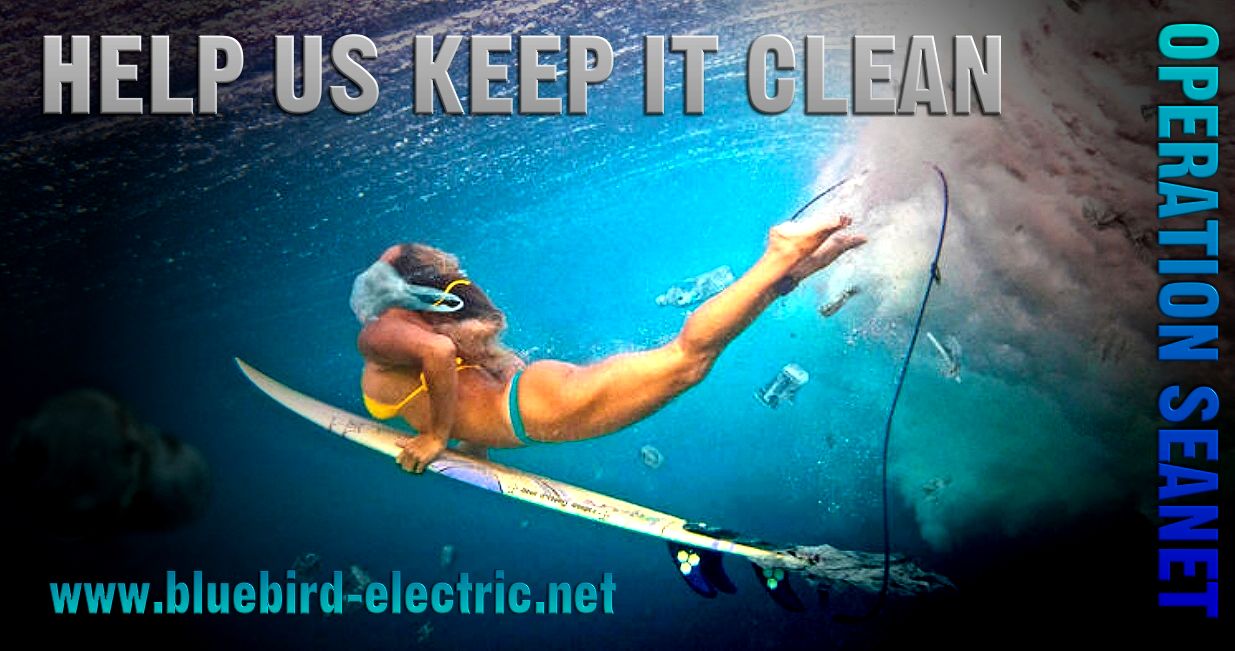
IT'S
NOT SPORTING
- Just like the situation at Guanabara
Bay, it could soon be dangerous to swim in a sea filled
with toxic plastic waste. Ocean ally, Bluebird
Marine Systems is pioneering the design of green robots
that can vacuum up plastic waste and offload while at sea, by
coupling with a converted bulk carrier called a PlastiMax.
PROJECT
HISTORY 2012 - 2020
2012
- TED Talk
2013
- Company Formation
2014
- Concept Revisions
2015
- Scale Model Tests
2016
- North Sea Trial
2017
- Pipe Size Reduction
2018
- Wilson & Scale Test
2019
- Sea Trials Pacific
2020
- The Future
OCEAN
CLEANUP PROJECTS
*
Aliance
to end Plastic Waste
*
Boyan
Slat's ocean booms
*
4Ocean
recycled plastic bracelets
*
Kulo
Luna graphic novel
*
Ocean
Voyages Institute
*
Ocean
Waste Plastic
*
Seabin
*
Sea
Litter Critters
*
SeaVax
autonomous drones
*
World
Oceans Day
LINKS
& REFERENCE
http://www.plasticsnews.com/article/20150825/NEWS/150829953/study-cleaning-ocean-plastic-now-will-catch-big-pieces-before-they-degrade
https://startupjuncture.com/2016/06/22/ocean-cleanup-launches-prototype-north-sea/
http://www.theoceancleanup.com/press/press-releases-show/item/the-ocean-cleanup-secures-full-funding-for-prototype/
http://www.gizmag.com/ocean-cleanup-dtuch-seas/43999/
http://www.greenoptimistic.com/boyan-slat-ocean-cleanup-north-sea-20160627/
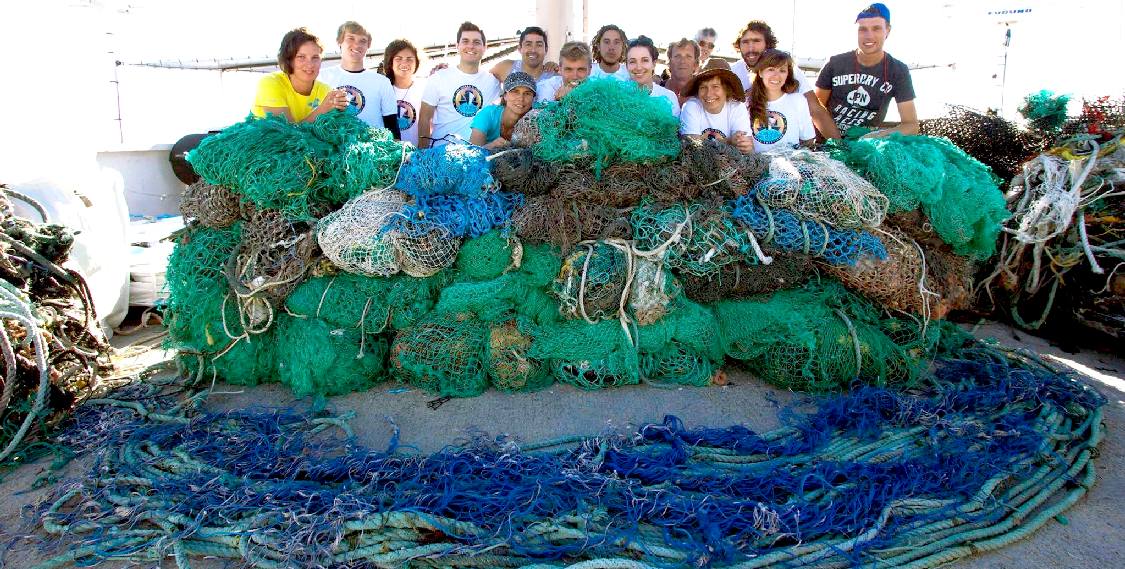
|





